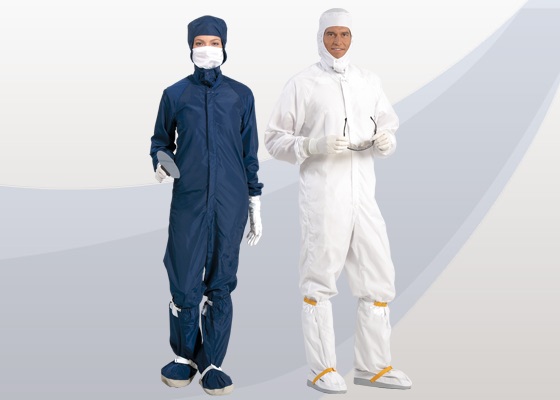Laboratories across the world regularly conduct testing, perform experiments, and create products. Working in these labs, it is often expected to maintain a clean and contaminant free work environment. Having a clean environment starts with reducing contamination that may come from the workers or their clothing. Cleanroom suits do a great job of drastically reducing air contaminants and pollutants that can damage products or experiments. There are many options for materials when choosing a cleanroom suit. Your suit will most likely be determined by the type of work that you are conducting in your laboratory. Below, let’s take a look at three different popular cleanroom suit materials.
PolyPro
Also called PP, PolyPro is the thinnest garment available. Made of thermoplastic polymer, this suit is the cheapest option available. PolyPro suits are made from a single layer of material and are often very lightweight. Usually beard covers and bouffant caps are made of PolyPro and are commonly found in clean environments. When selecting PolyPro, there are various weights and thicknesses to choose from.
SMS
The next level of protection people can use when working in a clean environment is a suit made from a material called SMS. This material combines three layers of PolyPro together. The middle layer is called Melt Blown PolyPro. To create the SMS, two layers of Spunbound PolyPro surround the Melt Blown. Because this material has three layers as opposed to just one SMS cleanroom suits tend to be more durable. Another advantage of SMS suits is the fact that they resist most liquids. Although these suits contain three layers of material they are often lightweight and breathable. These suits also have a minimum level of lint that will disperse in the environment.
Microporous
Having a cleanroom suit that is made of microporous material will be the best protection you can find in the laboratory. This material is a polypropylene fabric that is laminated with microporous polyethylene. In the laboratory world, microporous suits are considered a fantastic alternative to Tyvek. Microporous suits can resist any liquid and are incredibly durable. Most often, microporous suits are used in laboratories where cleanliness is most critical.
Depending on what you and your laboratory are looking to achieve there are several options to keep your laboratory running cleanly and successfully. It is always a good idea to determine the needs of your laboratory first before purchasing suits. Often, suit requirements are determined by the type of work that is being conducted, the type of chemicals in use, and the type of results the laboratory is looking to achieve. Knowing what requirements are needed first will lead you to the type of suit needed to achieve your goals.




